Tully Potter stands up for the old-school style and outstanding precision of the prodigious Czech performer
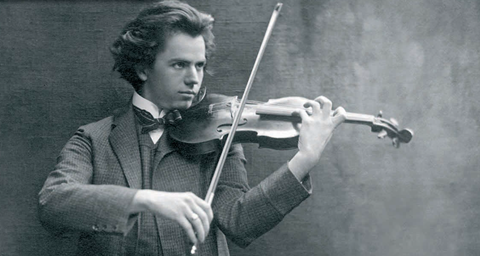
Discover more Featured Stories like this in The Strad Playing Hub
This article appeared in the March 2011 issue of The Strad
Sixty years before the Beatles, the similarly mophaired Jan Kubelík took the musical world by storm, becoming the pin-up boy of the violin. Although his star faded a little and he never made it as a composer, the Czech fiddler remained at the top of his profession for four decades.
CHRONOLOGY
1880 Born in Michle, near Prague
1892 Enters Prague Conservatoire
1898 Graduates, Vienna debut
1900 Makes London debut
1901 Gives first American tour
1902 Receives Royal Philharmonic Society Gold Medal
1903 Marries, moves his main home to Hungary
1905 Paganini Medal
1915 Takes five-year sabbatical to compose
1939 Gives the first of ten 60th-birthday concerts in Prague
1940 Dies in Prague
PEDAGOGICAL BACKGROUND
At five Kubelík began studying the violin with his father, a gardener and talented amateur, whom he soon excelled. Studies followed with Karel Weber and, from 1890, Karel Ondříček, younger brother of František and leader of the National Theatre Orchestra in Prague. At eight ‘Jeník’ made his début in Vieuxtemps’s E major Concerto; at ten he was playing Bériot’s G major Concerto and a Mildner concert study to a professional standard; and at twelve he entered the Prague Conservatoire, to become Otakar Ševčík’s first major success.
Kubelík certainly absorbed Ševčík’s work ethic: he practised up to twelve hours a day – ‘slowly, patiently and accurately’, according to Boris Schwarz – and sometimes until his fingers bled. In the process he acquired a brilliant and reliable though somewhat brittle technique, which he modified in later years as he played more of the Classical repertoire. He also studied composition with Josef Foerster, Karel Knittl and Karel Stecker. While a student he dazzled his teachers with the Brahms Concerto, and the conservatoire director, Antonín Bennewitz, described him as: ‘Colossal, phenomenal!’ He graduated on 7 July 1898 with the Paganini–Wilhelmj D major Concerto, tossing off the notorious Sauret cadenza and winning the sobriquet ‘The second Paganini’.
TECHNIQUE AND INTERPRETATIVE STYLE
Kubelík has an equivocal place in violin history. He is acknowledged as a key figure in advancing technique, showing how cleanly and precisely the violin could be played and stressing that runs and scales should be practised slowly and brought up to speed only when the notes are thoroughly and evenly mastered (though this precept came from Ševčík).
It was pointed out by Joseph Szigeti, however, that Kubelík hewed to a more old-fashioned style than Kreisler, Elman and Heifetz, who could caress a phrase in a way foreign to Kubelík. Musically, too, he had limitations, though Carl Flesch was wrong in diagnosing a lack of chamber music experience. Like all Prague Conservatoire alumni in the era of Bennewitz and Wihan, Kubelík knew and loved the chamber literature: in London in the early 1900s he even led a quartet including the cellist Paul Grümmer.
SOUND
The Kubelík tone had a tactile but slightly raw quality, akin to the sound made by the leading Czech singers of his time – Emmy Destinn, Otakar Marák and Karel Burian. On record it can be very attractive, especially when he is on form, but the ‘transitional’ attitude to vibrato will not appeal to those with ears fixated on post-Elman Russians.
Read: Great string players of the past: Violinist Bronislaw Huberman
Read: Great string players of the past: violinist Ivry Gitlis on George Enescu
STRENGTHS
Kubelík excelled in spiccato, octaves, harmonics, tremolos and lefthand pizzicatos. Exceptional rhythmic control helped him to avoid rushing ahead of the beat, even in the most virtuosic passages. He was a master of the mezza voce and messa di voce, two more traits displaying his awareness of singing technique. His tonal contrasts could be exquisite, his judgement of rubato spot on.
WEAKNESSES
The flaws in Kubelík’s violinistic make-up have been greatly exaggerated, if his records are any guide. No doubt his style could seem cool to those with the sounds of newer virtuosi ringing in their ears, but a man who made ten US tours up to 1938 and 20 British tours up to 1934 was hardly a back number. Like most players of his day, he declined slightly in his 50s.
The flaws in Kubelík’s violinistic make-up have been greatly exaggerated, if his records are any guide
INSTRUMENTS AND BOWS
At first Kubelík owned two Guarneri ‘del Gesù’ violins, including the 1735 instrument later played by Kyung-Wha Chung, but he mostly had Stradivaris, starting with the 1687 ‘Kubelík’. Another was the ‘Alard’ of 1715. From 1910 he used the ‘Emperor’, also dated 1715. He had an Albert Nürnberger bow.
REPERTOIRE AND RECORDINGS
Early on, he played mostly virtuoso works: a dozen by Paganini, including the B minor Concerto as well as the D major; Wieniawski’s Faust Fantasy and F sharp minor Concerto; Lalo’s Symphonie espagnole; Sarasate’s Zigeunerweisen; Vieuxtemps’s Introduction et Polonaise and D minor and G major Concertos; Tartini’s ‘Devil’s Trill’ Sonata; Bazzini’s La ronde des lutins; Ernst’s F sharp minor Concerto; and trifl es by Lotto, Drdla, Saint-Lubin, Godard and so on. However, he frequently played Bach’s Chaconne and E major Preludio; Mozart’s K218 and K219 concertos and the Sinfonia concertante; Beethoven’s Concerto, Romances and ‘Kreutzer’ and ‘Spring’ sonatas; Bruch’s G minor and D minor concertos and Scottish Fantasy; the Viotti Concerto in A minor; the concertos of Mendelssohn, Dvořák and Goldmark; Saint- Saëns’s Havanaise and Introduction et rondo capriccioso; Svendsen’s Romance; Tchaikovsky’s Sérénade mélancolique and Valse–Scherzo; and Grieg’s C minor Sonata.
His own arrangements – Fibich’s Poème being the best known – were tasteful. He prepared cadenzas (mostly published) for the Brahms, Beethoven, Paganini, Mozart and Viotti concertos and the ‘Devil’s Trill’. J.B. Foerster, son of his teacher, composed for him a C minor Concerto and Kubelík wrote cadenzas for it. In Vienna, Prague or Budapest he could play his own concertos (four out of six published) but in Germany and the English-speaking countries he was seen purely as a virtuoso. He recorded extensively before the First World War and again in the 1930s, when his intonation was less sure but his musicianship had deepened. Sadly none of the ‘big’ works were documented, although we have eight minutes of Kubelík playing his own E minor Variations live with orchestra in 1934 and an exciting live Paganini La campanella from 1935. His signature pieces by Drdla and Fibich were recorded several times. The 45 acoustic recordings once available from Biddulph can now be had as downloads.
RECOMMENDED RECORDINGS
Bazzini, Wieniawski et al. TESTAMENT SBT2-1323, ‘THE GREAT VIOLINISTS’
Paganini, Wieniawski, Kubelík et al. SYMPOSIUM 1072
Vieuxtemps, Wieniawski, Sarasate JAN KUBELÍK SOCIETY SJK001
Drdla, Fibich, Dvorˇák, Suk et al. JAN KUBELÍK SOCIETY SJK002
Acoustic Recordings 1902–13 DOWNLOADS: WWW.CONTRACLASSICS.COM
The Strad is offering customers the chance to purchase print magazines from its archives, while stocks last. Get your copy here before they’re all gone!
Read: Great string players of the past: violinist Joseph Szigeti
Read: Great string players of the past: violinist Fritz Kreisler
Discover more Featured Stories like this in The Strad Playing Hub
The number one source for playing and teaching books, guides, CDs, calendars and back issues of the magazine.
In The Best of Technique you’ll discover the top playing tips of the world’s leading string players and teachers. It’s packed full of exercises for students, plus examples from the standard repertoire to show you how to integrate the technique into your playing.
The Strad’s Masterclass series brings together the finest string players with some of the greatest string works ever written. Always one of our most popular sections, Masterclass has been an invaluable aid to aspiring soloists, chamber musicians and string teachers since the 1990s.
American collector David L. Fulton amassed one of the 20th century’s finest collections of stringed instruments. This year’s calendar pays tribute to some of these priceless treasures, including Yehudi Menuhin’s celebrated ‘Lord Wilton’ Guarneri, the Carlo Bergonzi once played by Fritz Kreisler, and four instruments by Antonio Stradivari.

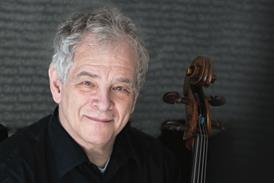



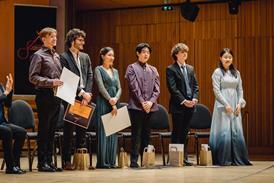
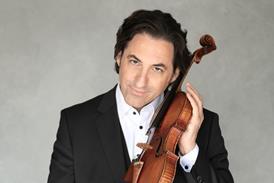
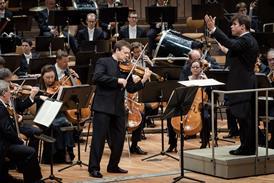


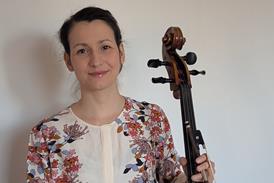
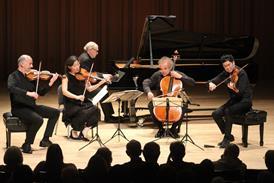


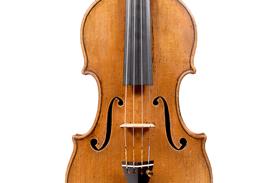
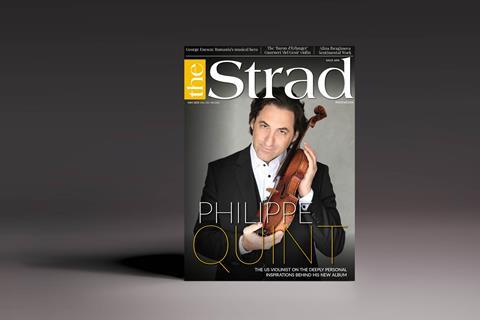




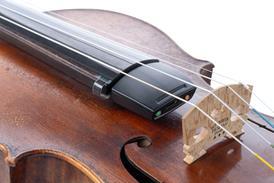
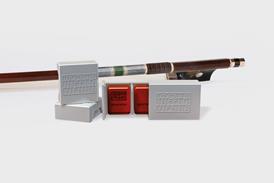
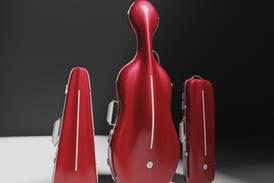















No comments yet